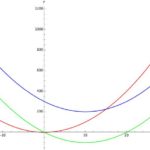Quiz 13 (Part 2) Find Eigenvalues and Eigenvectors of a Special Matrix

Problem 386
Find all eigenvalues of the matrix
\[A=\begin{bmatrix}
0 & i & i & i \\
i &0 & i & i \\
i & i & 0 & i \\
i & i & i & 0
\end{bmatrix},\]
where $i=\sqrt{-1}$. For each eigenvalue of $A$, determine its algebraic multiplicity and geometric multiplicity.
Sponsored Links
Contents
Proof.
We use an indirect method to find the eigenvalues of $A$ as follows.
Let $B=A+iI$. Then note that if $\lambda$ is an eigenvalue of $B$, then $\lambda-i$ is an eigenvalue of $A$.
Furthermore, the algebraic (respectively, geometric) multiplicity of $\lambda$ is the same as the algebraic (respectively, geometric) multiplicity of $\lambda-i$.
We reduced the matrix $B$ as follows:
\begin{align*}
B&=\begin{bmatrix}
i & i & i & i \\
i &i& i & i \\
i & i & i & i \\
i & i & i & i
\end{bmatrix}
\xrightarrow{\substack{R_2-R_1\\ R_3-R_1\\ R_4-R_1}}
\begin{bmatrix}
i & i & i & i \\
0&0&0&0\\
0&0&0&0\\
0&0&0&0
\end{bmatrix}
\xrightarrow{\frac{1}{i}R_1}
\begin{bmatrix}
1&1&1&1 \\
0&0&0&0\\
0&0&0&0\\
0&0&0&0
\end{bmatrix}.
\end{align*}
It follows that the rank of $B$ is $1$, and thus the nullity of $B$ is $3$ by the rank-nullity theorem.
Since the nullity is greater than $0$, it yields that $\lambda=0$ is an eigenvalue of $A$.
Recall that the eigenspace $E_0$ of $\lambda=0$ is the null space of $B$.
Hence the geometric multiplicity of $\lambda=0$ is the nullity of $B$, thus it is $3$.
It follows that the algebraic multiplicity of $\lambda=0$ is either $3$ or $4$.
Recall that the sum of all eigenvalues is equal to the trace of $B$, which is $\tr(B)=4i$.
Thus, we see that $\lambda=0$ is not the only eigenvalue.
There can be only one more eigenvalue of $B$ since the sum of algebraic multiplicities of all eigenvalues of $B$ is $4$.
It follows that $4i$ is an eigenvalue of $B$ with algebraic multiplicity $1$, and hence the geometric multiplicity is also $1$.
It yields tha the algebraic multiplicity of $\lambda=0$ must be $3$.
Another way to see that $4i$ is an eigenvalue of $B$ is to notice that the vector
\[\begin{bmatrix}
1\\1\\1\\1
\end{bmatrix}\]
is an eigenvector. In fact, we have
\begin{align*}
B\begin{bmatrix}
1\\1\\1\\1
\end{bmatrix}=4i\begin{bmatrix}
1\\1\\1\\1
\end{bmatrix}.
\end{align*}
(Since all the entries are the same, it might not so difficult to notice this.)
In summary so far, we have obtained that eigenvalues of $B$ are $0$ and $4i$ with the algebraic/geometric multiplicities are $3$ and $1$, respectively.
Since $A=B-iI$, it follows that the eigenvalues of $A$ are $0-i=-i$ and $4i-i=3i$ with the algebraic/geometric multiplicities are $3$ and $1$, respectively.
Comment.
This is the second problem of Quiz 13 (Take Home Quiz) for Math 2568 (Introduction to Linear Algebra) at OSU in Spring 2017.
The first problem of Quiz 13 is “Quiz 13 (Part 1) Diagonalize a matrix.“.
List of Quiz Problems of Linear Algebra (Math 2568) at OSU in Spring 2017
There were 13 weekly quizzes. Here is the list of links to the quiz problems and solutions.
- Quiz 1. Gauss-Jordan elimination / homogeneous system.
- Quiz 2. The vector form for the general solution / Transpose matrices.
- Quiz 3. Condition that vectors are linearly dependent/ orthogonal vectors are linearly independent
- Quiz 4. Inverse matrix/ Nonsingular matrix satisfying a relation
- Quiz 5. Example and non-example of subspaces in 3-dimensional space
- Quiz 6. Determine vectors in null space, range / Find a basis of null space
- Quiz 7. Find a basis of the range, rank, and nullity of a matrix
- Quiz 8. Determine subsets are subspaces: functions taking integer values / set of skew-symmetric matrices
- Quiz 9. Find a basis of the subspace spanned by four matrices
- Quiz 10. Find orthogonal basis / Find value of linear transformation
- Quiz 11. Find eigenvalues and eigenvectors/ Properties of determinants
- Quiz 12. Find eigenvalues and their algebraic and geometric multiplicities
- Quiz 13 (Part 1). Diagonalize a matrix.
- Quiz 13 (Part 2). Find eigenvalues and eigenvectors of a special matrix
 Add to solve later
Add to solve later
Sponsored Links

















7 Responses
[…] Quiz 13 (Part 2) Find eigenvalues and eigenvectors of a special matrix […]
[…] Quiz 13 (Part 2). Find eigenvalues and eigenvectors of a special matrix […]
[…] Quiz 13 (Part 2). Find eigenvalues and eigenvectors of a special matrix […]
[…] Quiz 13 (Part 2). Find eigenvalues and eigenvectors of a special matrix […]
[…] Quiz 13 (Part 2). Find eigenvalues and eigenvectors of a special matrix […]
[…] Quiz 13 (Part 2). Find eigenvalues and eigenvectors of a special matrix […]
[…] Quiz 13 (Part 2). Find eigenvalues and eigenvectors of a special matrix […]